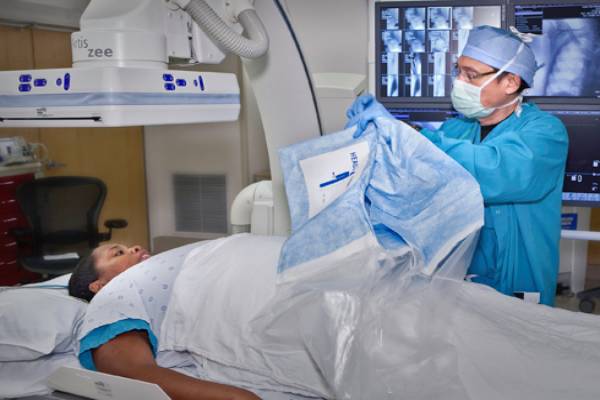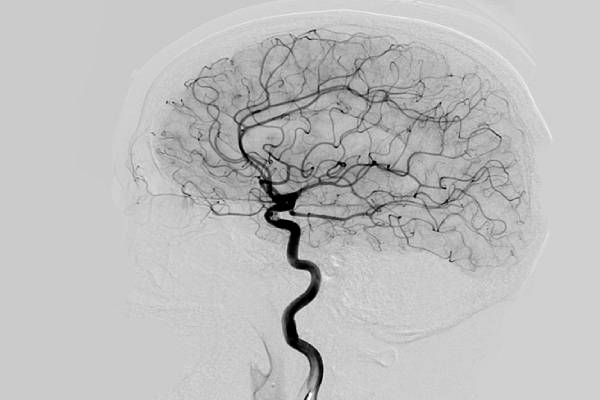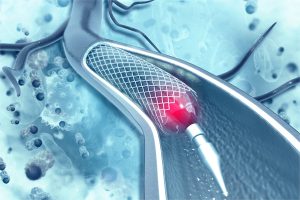Table of Contents
Angiography is a method in which blood vessels are imaged using X-rays to detect any obstruction or cardiovascular problems. When blood vessels become clogged or damaged, chest pain, heart attack, stroke, and other problems occur. The doctor can identify the source of the problem and the extent of blockages and damage to blood vessels to be treated later through angiography. In some cases, despite all these problems, a specialist may determine that angiography is prohibited. Keep reading on Amitis Med Tour Health Tourism Company’s website to learn more about contraindications to angiography.
Iran is one of the most advanced countries providing medical services to international patients. Iran has been able to equip its hospitals and the presence of experienced and skilled heart surgeons to become an ideal destination for various cardiac surgeries, including angiography. Iran is one of the best countries for multiple surgeries in economic efficiency. You can pay less for angiography by traveling to Iran and doing angiography in this country. Also, with skilled and experienced surgeons and up-to-date and advanced facilities in Iran, you can safely choose Iran as a suitable destination for angiography.

Angiography Preoperative Instructions
Before your angiogram, you may have a blood test to check for blood clots. To prepare for angiography, you must follow the instructions below.
- Do not take aspirin or aspirin-containing medications before angiography.
- Do not take medications such as warfarin or dipyridamole for 72 hours before and 24 hours after angiography. They are blood thinners, and consuming them may lead to bleeding during angiography.
- Take other medications, especially diabetes medications, as usual.
- If you use short-acting insulin, you should not inject it on the day of surgery. But if you use long-effect insulin, take it as usual.
- If you have diabetes, you should inform the radiology department upon your arrival at the hospital.
- To reduce kidney complications after the surgery, avoid taking Glucophage (metformin) for 48 hours before and after surgery. Ask your doctor how to manage your blood sugar before and after surgery.
- It would help if you did not eat or drink anything but transparent liquids the night before angiography, such as water, for breakfast on the day of surgery.
What are contraindications to angiography?
Angiography is not suitable for everyone, and it’s not recommended for some people or in some of the medical conditions described below:
- People with mild cardiovascular diseases or symptoms of blocked or damaged arteries are not visible in them.
- If artery damage and blockage symptoms are controlled and treated with medication, you probably won’t need an angiography.
- If tests such as a heart stress test can treat your symptoms, you also don’t need angiography.
How to prepare for angiography?
First, change your clothes and put on a hospital gown. Angiography takes about two to three hours, during which you will receive a sedative. A slender tube called a catheter is then inserted into a vein by a doctor. The catheter is slowly inserted into an artery that is blocked or damaged. At this stage, some contrast dye is injected into the vein through the catheter, and an x-ray image is taken of the blood vessels. Contrast paint is injected into the arm or groin to indicate blood vessel problems. By examining the images taken, the doctor can identify the source of vascular problems and the extent of the injury to eliminate these problems in the next step.
Angiography Postoperative Instructions
After angiography, about 4 to 6 hours in the ward, you will be monitored to check your health and determine the instructions you should do at home. It would help if you did not drive after being discharged from the hospital. So ask someone to take you home. For 24 hours after surgery, it is advisable to seek help from someone in case of post-angiography complications. After angiography, drink plenty of fluids to remove the contrast dye from your body. You can usually resume most of your activities the day after the angiography. But it would help if you didn’t lift heavy objects or do strenuous exercise. There is a possibility of bruising, pain, slight swelling, or blood clots at the angiography site, which is normal and will be resolved after a few days. If you feel uncomfortable with pain, you can use painkillers such as acetaminophen as prescribed by your doctor.
Possible Complications of Angiography
Most people who do angiography usually do not experience any specific complications. However, there is a possibility of minor and even more severe complications in some cases. These side effects include:
- Infection at the angiography surgical site, leading to redness, swelling, and pain at the wound site. It would help if you had antibiotics to treat the infection.
- Mild reaction to the contrast dye that is injected during angiography. This reaction includes an itchy rash that can be treated with medication.
- Kidney damage due to contrast dye, which is temporary.
- Heart attack or stroke
- Damage to blood vessels leads to internal bleeding. In some cases, you may need reoperation to repair these injuries.
- Allergic reaction to contrast dye, leading to dizziness, respiratory problems, and decreased alertness.
The complications mentioned are severe but rare. For example, one in 1,000 people may have a stroke or heart attack and other serious complications.
Angioplasty Postoperative Care
You should rest in bed for a day after angiography and get up to do essential tasks like using the restroom and rest again immediately afterward. Try to keep your feet flat with bandages and don’t squat or bend for two days after surgery. Avoid heavy lifting or pulling objects in the first three days to avoid putting excessive pressure on your wound. When climbing the stairs, do not pressure the foot where the angiography site is located and try to walk with the other foot.
Also, try not to do heavy work with the arm that angiography is performed on and keep your hand as straight as possible. The week after the angiography, you can gradually resume your daily activities. Ask your doctor about the right time to return to work.
How to take care of bandages of angiography surgical sites
Try to keep the bandage dry and clean, and don’t put another application on it. Do not shower for one day after angiography. If you follow your doctor’s advice and rest well, you will not get bleeding and swelling at the angiography site. However, you may notice a little bruising and a soft lump around the incision after removing the bandage. It is expected when the lump is small and abnormal if it grows, and you should inform your doctor about it. If you notice pain, stiffness, heat, and humidity at the angiography site, you may have internal bleeding.
If you notice such symptoms, you can control them by lying on the floor and pressing the bandage firmly and asking someone to check the angiography site and see if the angiography surgical site is bleeding. If you feel bleeding and swelling, you should lie down for 15 minutes and press a few inches above the angiographic site. So that you feel the pulse under your fingers, don’t stop the pressure until you think the bleeding has stopped. If the bleeding has stopped, the swelling of the angiography site decreases. But if you feel the node getting worse and more complicated, move your finger a little and keep pushing.
It would help if you sat on the floor for an hour before getting up to avoid possible complications. The symptoms of external bleeding are characterized by the observation of blood on the bandage, swelling, burning, and pain. If you have such symptoms, remove the bandage from the site and check the location of the angiography. If you notice bleeding, you can repeat the steps above to stop the bleeding. But if the bleeding doesn’t stop, call a medical emergency.
When to visit a physician?
Bellow, we will explain the conditions that need to be referred to a specialist after angiography:
- When the angiography site is bleeding, the bleeding does not stop after pressing the surgical site.
- If you have severe pain that cannot be controlled by taking analgesics.
- When the skin becomes red, swollen, and warm.
- If you feel cold or the skin color of the leg or arm where the angiography is located looks pale.
- When a complex, painful lump forms at the incision site.

Concluding Remarks
Angiography is not suitable for everyone and should be done according to each individual’s cardiovascular conditions and symptoms. Angiography can be used to investigate and resolve blood vessel problems. Although this method is low-risk and safe, there are mild and minor complications after angiography, mostly treated with medication. To minimize the complications of angiography, you need to get enough rest and drink a lot of fluids to remove the injected contrast dye that causes temporary kidney damage. Finally, observing the doctor’s instructions and taking medications on time reduces the risks.




